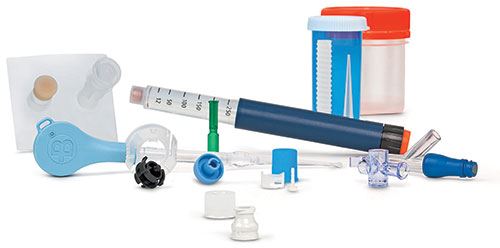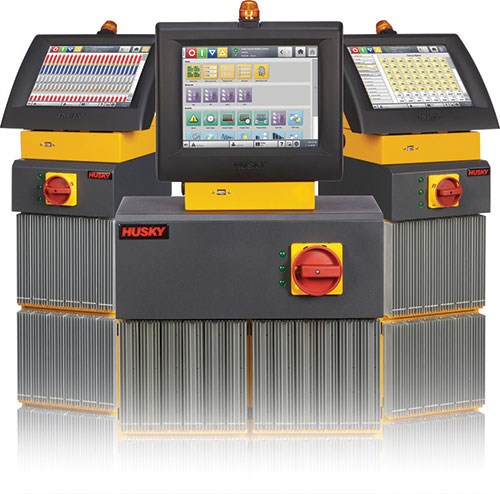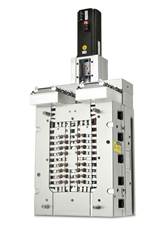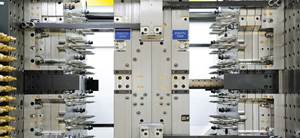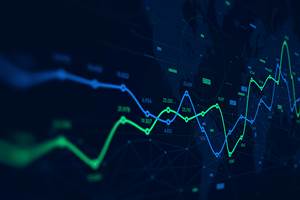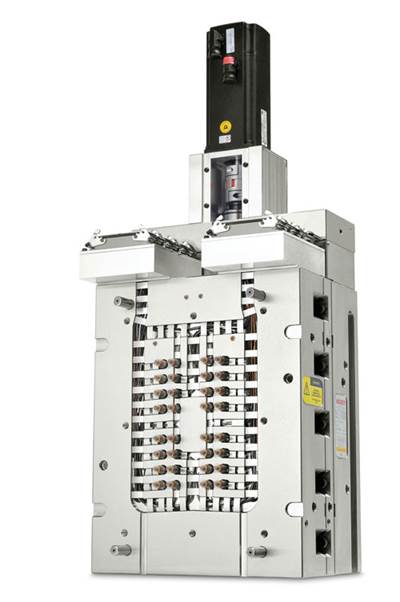Achieving Accurate Temperature Control with Your Hot Runner Controller
The right hot runner controller is key to producing high-quality, complex medical parts.
The medical equipment market is driven by complex applications that require reliable, repeatable molding solutions. For medical molders who must quickly and consistently manufacture high-quality parts using difficult-to-mold resins as well as complex tooling that hold extreme tolerances, this leaves little room for error.
An aging population and increasing demand for disposable medical devices present significant short- and long-term opportunities for manufacturers of plastics components. However, while medical molding is growing, it is also a challenging industry characterized by lengthy product development processes, numerous clinical trials, demanding record-keeping practices and greater regulatory oversight than other industries. These increased regulations, in particular, drive part quality, process stability and risk mitigation as a means to eliminate part failure, and possible injury or death of patients.
Maintaining the most accurate and repeatable temperature control in a molding operation is essential to producing high-quality, highly complex medical parts consistently and reliably—and the right hot runner controller is key.
Specific Controller Design Considerations
Accurate and repeatable temperature control with minimized cavity-to-cavity and shot-to-shot variability is an important aspect of part quality and process stability. Using a hot runner controller specifically designed to provide solutions that help comply with the medical industry’s stringent requirements will help.
A controller that delivers on this will deploy active reasoning technology. Requiring no intervention by the user, active reasoning technology is able to generate a parameter set to precisely fit each zone’s unique thermal response characteristics. Once the optimal control algorithm has been calculated, it uses a modulation method that delivers a rapid, uniform flow of power, minimizing the amount of time that energy is not being delivered to the heaters.
By using a technique known as oversampling, the integrity of the temperature signal can be preserved, enabling the algorithm to execute power changes based on the most accurate data. Additionally, isolated thermocouple inputs will assure the reliability of incoming temperature measurement by providing a high degree of immunity to electrical noise. This eliminates the potential risk associated with electromagnetic interference emitted by the servomotor systems found on all electric molding machines. The outcome is an accurate and repeatable temperature control, regardless of the hot runner system or processing environment.
There are times when it is necessary for the controller to stop heating the mold or circumstances that require the machine to stop cycling. If this occurs, material could degrade, resulting in bad parts entering into the downstream process.
Look for the following interlocks to mitigate this risk:
1. At-temperature output, which inhibits injection until the mold is at processing temperature;
2. PCM output, which stops the injection molding machine from cycling if the controller stops heating the mold; and
3. Remote standby input, which brings the processing set point to a lower temperature if the machine stops cycling.
This connectivity will enable the machine and controller to make informed decisions based on the state of the other, which provides assurance against defective parts reaching end users.
Storage Support and Tracking Trends
Other aspects of medical manufacturing are rigid documentation of the process, including any changes or deviations from the original parameters used during mold qualification. Your controller should ensure these parameters are retained by permanently storing them in a setup file that can be recalled at the press of a button.
To further enhance this capability, an optional remote-load function that allows the corresponding mold setup in the controller to be loaded from the injection molding machine is optimal.
A system that also supports a wide range of file types for storing and managing critical documentation right from the controller’s screen also is helpful. These can be imported or exported over a network or using a thumb drive.
Be sure your controller also provides process monitoring features that make it a powerful tool for analyzing the system, optimizing the molding process, tracking errors, and finding the source of a recent error or predicting where future errors may occur. For example, an event log contains a complete record of all user interactions so that each step leading up to an issue can be followed.
Additionally, you want a process history screen that provides a visual summary of a mold’s recorded operation to map the behavior of the system at the time of the error and to search for potential causes. This data can then be exported in a common file format and stored externally, or used to create custom reports to further satisfy documentation requirements.
To identify issues in real time, a process trend screen should plot data as it occurs and provide a graphical comparison of multiple zones in a single view for a better understanding of the effects of the process and the thermal relationship between zones. All of these variables are then tracked through the process targets screen and compared against specification limits tied to thresholds. If these limits are violated, it triggers an alarm and digital output to alert operators while halting the molding operation or diverting the parts molded during the last cycle.
Finally, look for a stand-alone program that enables a user to access and monitor as many as 50 controllers connected to a network. This server-based application will provide a dashboard view of all connected systems with the ability to drill down to the details of individual zones. If it is a browser-based program, it is accessible from any web-enabled device that supports Internet Explorer 9, Chrome, Firefox or Safari. This enables all controllers on the plant floor to be monitored locally and in real time within the same factory or by off-site personnel anywhere around the world.
For those who must produce the most precise, highly complex medical parts, the right hot runner controller will provide the ideal platform for achieving better part quality and process stability while mitigating the risk of bad parts entering the supply chain.
Related Content
Husky Technologies Showcases Innovation Injection Mold Solutions at MD&M West 2023
This week, MD&M/Plastec West attendees can survey Husky’s latest technologies and services engineered for medical device manufacturers.
Read MoreU.S. Economy Indicates Prospects for Moldmakers
An examination of the U.S. economy suggests its resilience against a recession, yet a mixed outlook for moldmaking and plastics persists.
Read MoreInnovative Mold Building Enhances Packaging Material Efficiency, Elevates Recyclable Design
A manufacturing-focused design and optimized tooling enhance material efficiency in packaging for a new medical instrument.
Read MoreDynamic Tool Corporation – Creating the Team to Move Moldmaking Into the Future
For 40+ years, Dynamic Tool Corp. has offered precision tooling, emphasizing education, mentoring and innovation. The company is committed to excellence, integrity, safety and customer service, as well as inspiring growth and quality in manufacturing.
Read MoreRead Next
Selecting a Valve Gate Hot Runner
A look at valve gate plate actuation technology for consistent part filling, excellent gate quality and close nozzle spacing.
Read MoreHow to Use Continuing Education to Remain Competitive in Moldmaking
Continued training helps moldmakers make tooling decisions and properly use the latest cutting tool to efficiently machine high-quality molds.
Read MoreHow to Use Strategic Planning Tools, Data to Manage the Human Side of Business
Q&A with Marion Wells, MMT EAB member and founder of Human Asset Management.
Read More
